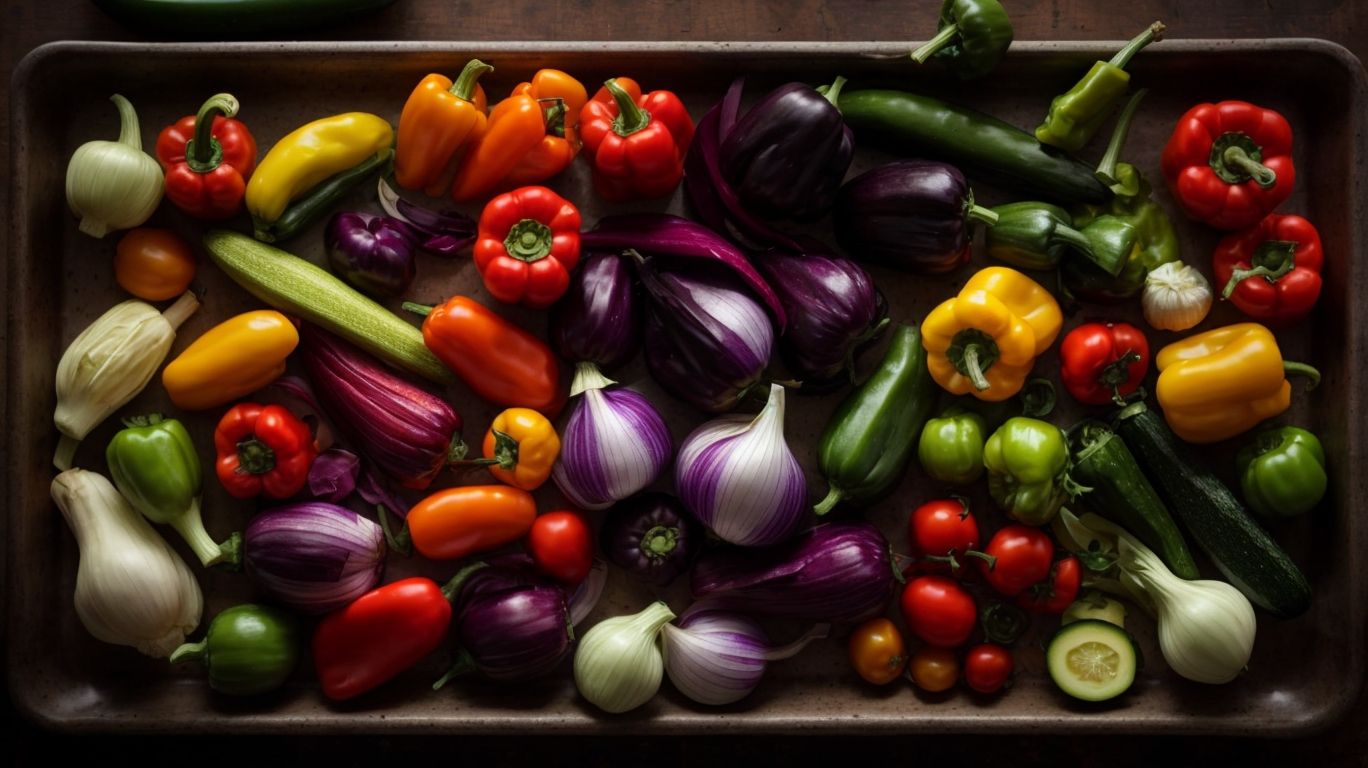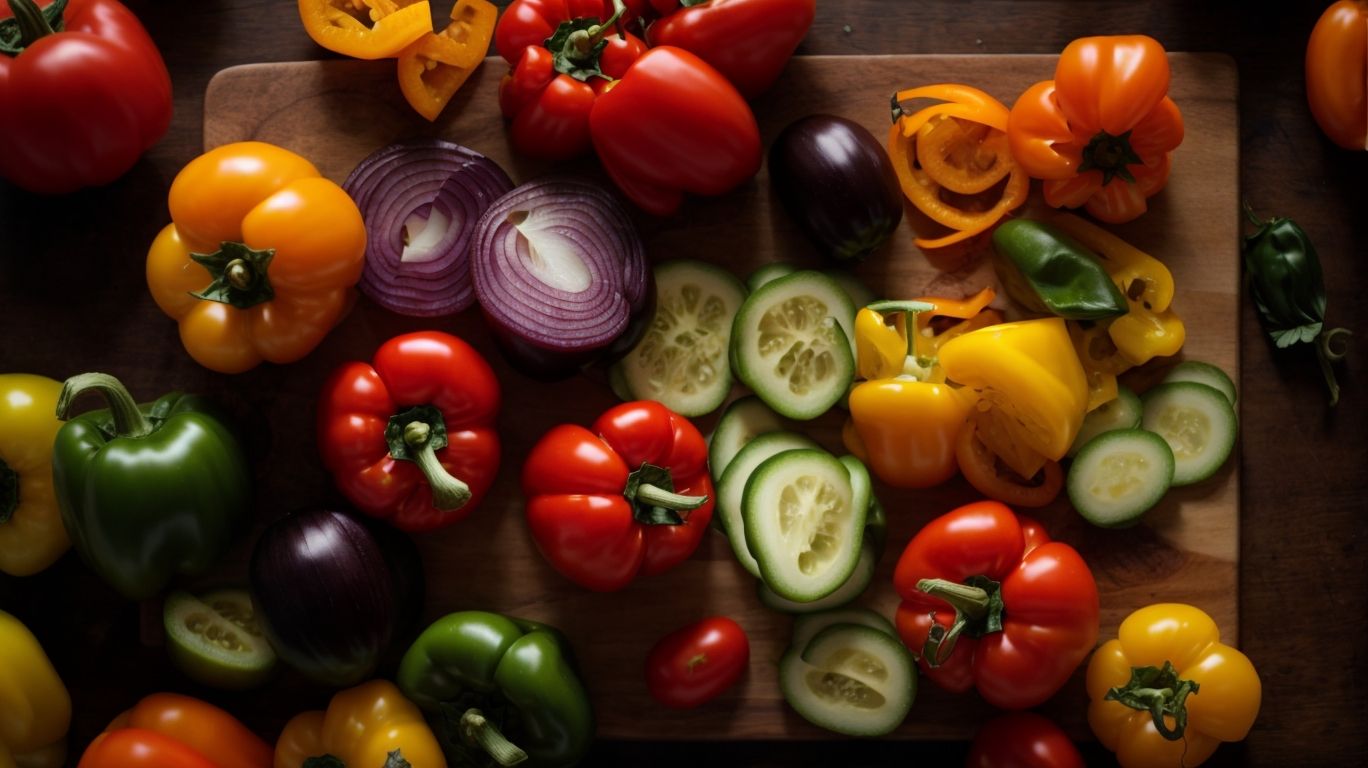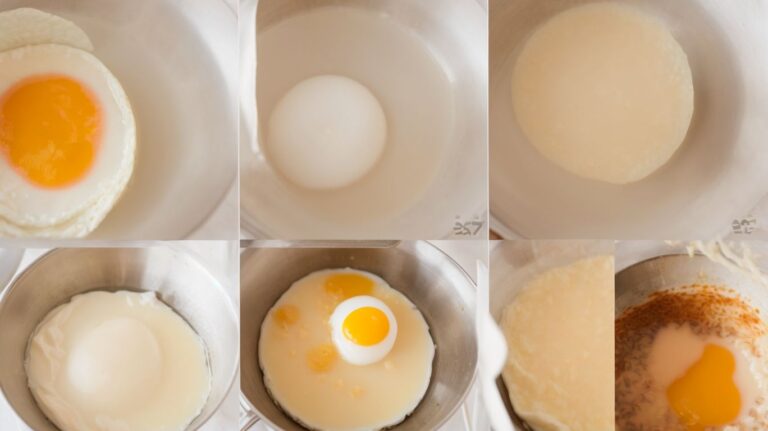How to Cook Vegetables for Fajitas?
Are you a fan of fajitas but not sure how to cook the perfect vegetables for this tasty dish? Look no further!
In this article, we will explore the different types of fajitas, the best vegetables to use, how to prepare and cook them, and some tips for perfectly cooked fajita vegetables.
Whether you prefer chicken, beef, shrimp, or veggie fajitas, we’ve got you covered with all the information you need to create a delicious meal. Let’s get cooking!
Key Takeaways:
What are the Different Types of Fajitas?
Fajitas come in various types, including Chicken Fajitas, Beef Fajitas, Shrimp Fajitas, and Vegetable Fajitas, each offering unique flavors and ingredients.
Chicken Fajitas are typically made with tender strips of chicken marinated in a blend of spices, such as cumin, paprika, and garlic, then cooked with colorful bell peppers and onions. The result is a savory and juicy dish with a hint of smokiness from the grilling process.
Beef Fajitas, on the other hand, feature slices of beef, often skirt or flank steak, marinated in a mixture of lime juice, soy sauce, and Mexican seasonings. The meat is seared to perfection and served with grilled veggies and warm tortillas.
Shrimp Fajitas showcase plump shrimp seasoned with chili powder, cumin, and lime, cooked alongside onions and peppers for a zesty, seafood twist on the classic dish.
Vegetable Fajitas cater to vegetarians and vegans, combining an array of grilled vegetables like zucchini, squash, mushrooms, and onions seasoned with a flavorful spice mix, creating a vibrant and satisfying meatless option.
Chicken Fajitas
Chicken Fajitas are a popular Tex Mex dish made with tender chicken strips marinated in flavorful seasonings and cooked to perfection in avocado oil.
To achieve the perfect balance of flavors, let the chicken marinate in a mixture of lime juice, cumin, paprika, and garlic powder for at least 30 minutes. This step ensures that every bite bursts with the authentic Tex Mex taste that fajitas are known for.
When cooking the marinated chicken, make sure to heat the avocado oil in a skillet over medium-high heat to get a nice sear on the meat. The sizzle of the chicken as it hits the hot pan is a crucial sound in fajita-making. Once the chicken is cooked through, serve it sizzling hot with warm tortillas, fresh toppings like salsa, guacamole, sour cream, and a squeeze of lime for that extra zing.
Beef Fajitas
Beef Fajitas feature succulent beef slices grilled to perfection and seasoned with a homemade fajita seasoning blend, creating a mouthwatering dish that is perfect for gatherings.
Grilling beef fajitas is a straightforward process that starts with marinating the beef strips in the fajita seasoning for at least 30 minutes to allow the flavors to infuse. Once marinated, the beef is then cooked over high heat on a grill, creating those delicious charred edges while keeping the meat juicy and tender. It’s important to not overcrowd the grill to ensure even cooking.
For the homemade fajita seasoning, you can mix together ingredients like chili powder, cumin, paprika, garlic powder, onion powder, and a dash of cayenne pepper for a spicy kick. Adjust the seasoning to your taste preferences, and store any leftovers in an airtight container for future use.
Regarding serving beef fajitas, consider setting up a DIY fajita bar with an array of toppings like guacamole, salsa, sour cream, shredded cheese, and fresh cilantro. This interactive dining experience allows guests to customize their fajitas to suit their preferences, making it a fun and engaging meal for everyone to enjoy.
Shrimp Fajitas
Shrimp Fajitas offer a light and flavorful option, with tender shrimp seasoned with garlic powder and cooked to perfection, providing a gluten-free and Vitamin C-rich meal.
The secret to making delicious shrimp fajitas lies in the perfect balance of spices and cooking techniques. Once the shrimp is marinated with a mix of cumin, paprika, and a hint of lime juice, it’s time to sauté them alongside colorful bell peppers and onions until they are beautifully caramelized.
This dish not only satisfies your taste buds but also offers a plethora of nutritional benefits. Vitamin C from the peppers helps boost your immune system and aids in collagen production for healthy skin.
The beauty of this dish is not just in its vibrant presentation but also in its versatility; you can serve these sizzling fajitas with corn tortillas or lettuce wraps for a low-carb option.
Vegetable Fajitas
Vegetable Fajitas are a delicious vegan option featuring a colorful mix of bell peppers, onions, and mushrooms sautéed to perfection, offering a flavorful and plant-based meal.
These fajitas are a wonderful way to enjoy a burst of vibrant flavors while keeping it light and healthy. The combination of the sweet bell peppers, savory onions, and earthy mushrooms creates a harmonious medley that appeals to both vegans and non-vegans alike. The sizzling sound as the vegetables hit the skillet is a prelude to the aromatic blend of spices that infuse the dish. With the right seasoning and a touch of lime juice, the Vegetable Fajitas come alive with a zesty tang that elevates every bite.
What Vegetables are Best for Fajitas?

Credits: Poormet.Com – Bryan Smith
When preparing fajitas, it’s essential to choose the best vegetables that complement the flavors and textures of the dish. Bell peppers, onions, mushrooms, and zucchini are among the top choices for creating delicious fajitas.
Bell peppers are vibrant and crunchy, adding a burst of color and a sweet flavor to fajitas. Onions, when caramelized, provide a rich sweetness that balances the dish’s spiciness. Mushrooms offer a meaty texture and absorb all the delicious spices and juices, enhancing the overall taste.
Zucchini, with its mild taste and tender texture, contributes a refreshing element to the fajitas. To prepare these vegetables perfectly, ensure they are sliced evenly for even cooking and marinated with a blend of seasonings that complement the fajita flavors.
Bell Peppers
Bell peppers are a vibrant and flavorful addition to fajitas, offering a burst of color, rich taste, and a healthy dose of Vitamin C to the dish.
These versatile vegetables come in various hues, including green, red, yellow, and orange, each bringing its unique sweetness and tanginess to the table. Their crisp texture adds a refreshing crunch to fajitas, complementing the tender meat or vegetarian protein in the dish. Packed with antioxidants, bell peppers also boast a low calorie count, making them a nutritious choice for a balanced meal. To incorporate them effectively in fajitas, consider sautéing them with onions and spices to enhance their flavors, or grilling them for a smoky twist on the classic recipe.
Onions
Onions are a fundamental ingredient in fajitas, adding depth of flavor, sweetness, and a savory element when sautéed with the homemade fajita seasoning, enhancing the overall taste of the dish.
When onions are caramelized during cooking, their natural sugars are released, imparting a delightful sweetness that balances out the spice in the dish. To further elevate the flavor profile of your fajitas, consider incorporating garlic, cumin, paprika, and a dash of cayenne pepper to the seasoning mix for a smoky and aromatic kick. Experimenting with different types of onions such as red, white, or yellow onions can introduce subtle variations in flavor and texture to your fajitas.
Mushrooms
Mushrooms are a versatile and meaty addition to fajitas, absorbing the bold flavors of the seasoning when cooked in a skillet or on the grill, providing a satisfying and vegetarian-friendly option for fajita lovers.
One of the enticing aspects of using mushrooms in fajitas is how they bring a unique umami depth to the dish. Their earthy flavor complements the sizzling peppers and onions perfectly, creating a harmonious blend of tastes. Whether you prefer Portobello, cremini, or shiitake mushrooms, they all offer a rich and savory element to your fajita filling.
When cooking mushrooms for fajitas, it’s crucial to achieve a perfect balance between tenderness and caramelization. Sautéing them over medium-high heat or grilling them can help bring out their natural flavors while creating a delightful texture.
Zucchini
Zucchini offers a delicate and mild flavor to fajitas, complementing the Tex Mex essence with a hint of Chipotle and the richness of avocado oil when included in the dish.
Zucchini, a versatile vegetable, not only contributes to the texture of fajitas but also enhances the overall taste profile. Its ability to absorb flavors makes it an ideal ingredient in Tex Mex cuisine. When paired with Chipotle, the zucchini absorbs the smoky and spicy notes, creating a harmonious blend of flavors.
Avocado oil, with its high smoke point, allows for a crispy sear on the zucchini, locking in its natural juices and flavors. This heart-healthy oil adds a buttery richness to the dish, elevating its nutritional value and providing a wholesome cooking experience.
How to Prepare the Vegetables for Fajitas?
Properly preparing the vegetables is crucial for crafting delicious fajitas.
This involves precise slicing techniques to ensure even cooking and marinating the veggies to infuse them with flavor before cooking. When slicing the vegetables, it’s essential to maintain consistency in the size of the cuts. Aim for uniform thickness to guarantee that all pieces cook evenly. For marination, consider using a blend of olive oil, lime juice, cumin, and chili powder to create a zesty flavor profile. Let the vegetables marinate for at least 30 minutes up to 2 hours to allow the flavors to penetrate the veggies thoroughly.
Slicing the Vegetables
Mastering the art of slicing vegetables for fajitas is essential to achieve the perfect balance of color, texture, and flavor in the dish. Consistent and uniform cuts ensure even cooking and a visually appealing presentation.
When slicing vegetables for fajitas, it’s crucial to pay attention to the size of the cuts. Slicing techniques play a key role in how vegetables cook within the dish. Larger slices may retain a crunch, adding texture, while smaller cuts can blend flavors more evenly. To achieve that perfect balance, aim for uniform slicing to guarantee that all pieces cook at the same rate. Whether you prefer julienne, matchstick, or classic strips, the presentation of the vegetables is just as important as their taste.
Marinating the Vegetables
Marinating the vegetables for fajitas is a crucial step in elevating the dish’s flavor profile. By combining the right seasonings and allowing the veggies to marinate, you ensure a delicious and well-seasoned meal.
Regarding marinating fajita vegetables, selecting the appropriate seasonings is key. Common choices include cumin, paprika, garlic powder, and lime juice to impart a zesty flavor.
Start by cutting the vegetables into even strips to maximize the surface area for absorption. Then, prepare a marinade using a blend of olive oil, the chosen seasonings, and a splash of lime juice.
Allow the vegetables to soak up the flavors by refrigerating them in the marinade for at least 30 minutes, but ideally, aim for 2-4 hours for the best results. This process not only infuses the vegetables with taste but also helps tenderize them for a satisfying meal.
How to Cook the Vegetables for Fajitas?
Cooking fajita vegetables to perfection requires choosing the right method that suits your preference. Whether you opt for the stovetop, grill, or oven, each method offers a unique way to bring out the flavors of the veggies.
When cooking fajita vegetables on the stovetop, you have the advantage of quick and precise heat control. Stir-frying the veggies over high heat imparts a slightly charred flavor while preserving their crunch. On the other hand, grilling fajita vegetables adds a delightful smoky essence to the dish, enhancing the overall taste profile. For those who prefer a hands-off approach, roasting the veggies in the oven results in tender, caramelized pieces with a rich depth of flavor.
Stovetop Method
The stovetop method for cooking fajita vegetables offers a convenient and straightforward approach, allowing you to use a skillet to sauté the veggies with your preferred seasonings in easy-to-follow steps.
Regarding selecting the ideal skillet for this task, a well-seasoned cast-iron or non-stick pan works best, ensuring even heat distribution and preventing the veggies from sticking. Choosing the right seasoning blend plays a crucial role in enhancing the flavor profile of your fajita vegetables. A mix of traditional spices like cumin, chili powder, paprika, and a splash of lime juice can elevate the taste to new heights.
To start, heat the skillet over medium-high heat and add a drizzle of oil to prevent sticking. Toss in your sliced bell peppers, onions, and any additional veggies of your choice. Sautéing the vegetables until they are tender yet still slightly crisp is key to achieving that perfect fajita texture.
Make sure to season generously with your spice blend, allowing the flavors to meld together beautifully. The sizzling sound and enticing aroma will let you know when your fajita vegetables are ready to be served. Enjoy them in tacos, burritos, salads, or as a flavorful side dish!
Grilling Method
Grilling fajita vegetables adds a smoky char and enhances the natural flavors of the veggies, creating a delicious and aromatic dish that is perfect for outdoor gatherings or barbecue events.
One essential step in grilling fajita vegetables is marinating them before they hit the grill. Marinades help infuse the veggies with extra flavor and moisture, enhancing their taste and texture. A simple marinade of olive oil, lime juice, garlic, and Mexican spices can work wonders.
When grilling, ensure to preheat your grill to medium-high heat and brush the veggies with a bit of oil to prevent sticking. Use a grill basket or skewers to keep smaller veggies from falling through the grates.
To serve, consider adding grilled fajita veggies to tacos, burritos, bowls, or even as a side dish to grilled meats. Their smoky flavor pairs beautifully with cilantro, avocado, and a squeeze of fresh lime juice.
For optimal results, remember to cut the vegetables into uniform sizes to ensure even cooking. Avoid overcrowding the grill to allow proper airflow and caramelization. Enjoy the delicious flavors of grilled fajita vegetables at your next outdoor feast!
Oven Method
Using the oven to cook fajita vegetables offers a hands-off approach that allows the flavors to meld together beautifully. Baking the veggies with a homemade fajita seasoning ensures a burst of flavor in every bite.
When you opt for the oven method, the gentle heat slowly caramelizes the onions and peppers, intensifying their natural sweetness. Roasting the vegetables helps retain their nutrients better than other cooking methods, resulting in a healthier dish.
To enhance the taste further, experiment with different fajita seasoning blends such as cumin, paprika, garlic powder, and oregano mixed with a hint of chili powder for a spicy kick. This combination infuses the veggies with a rich, smoky flavor that complements their natural freshness.
To ensure your oven-roasted veggies are well-seasoned, evenly coat them with the fajita seasoning blend before baking. This step guarantees that every piece is infused with the aromatic spices, providing a harmonious blend of flavors.
Tips for Perfectly Cooked Fajita Vegetables
Achieving perfectly cooked fajita vegetables requires attention to detail and some essential tips. Avoiding overcooking, focusing on flavorful seasoning, using a cast iron skillet, and incorporating a touch of spice can elevate your fajitas to a new level of deliciousness.
It’s crucial to understand that each vegetable in your fajita mix has its own ideal cooking time to achieve that perfect texture and flavor fusion. For example, bell peppers and onions typically cook faster than denser vegetables like carrots or sweet potatoes, so consider adding them in stages to ensure even cooking.
Ensuring a balanced seasoning is key to creating a harmonious blend of flavors. Experiment with a combination of traditional Mexican spices like cumin, chili powder, and oregano, and don’t forget a hint of citrus with some lime juice.
Regarding cookware, a good quality cast iron skillet can work wonders for fajita vegetables. It helps achieve that desirable caramelization and provides even heat distribution for a consistent cook.
Don’t Overcook the Vegetables
To ensure the best texture and flavor in your fajitas, it’s crucial not to overcook the vegetables. Keeping them slightly crisp and vibrant adds a delightful crunch and enhances the overall dining experience.
Overcooking fajita vegetables can lead to a mushy, soggy consistency, diminishing their natural vibrancy and taste. To retain that perfect balance, aim for a quick sauté or grill until they are just tender but still retain a slight bite. Timing is key – watch for signs such as vibrant colors and slightly softened texture to indicate ideal doneness. For bell peppers, a light char on the edges signals readiness, while onions should be translucent but not overly wilted.
Seasoning is Key
The secret to delicious fajita vegetables lies in the art of seasoning. Using the right blend of spices, herbs, and seasonings, such as a homemade fajita seasoning mix, can transform your veggies into a flavorful culinary delight.
Seasoning plays a crucial role in elevating the flavors of fajita vegetables, offering a symphony of tastes that tantalize the taste buds. Experimenting with different seasoning options, whether it’s opting for a smoky chipotle rub or a zesty lime-infused mix, can bring unique elements to your dish.
For those seeking a more personalized touch, creating your own fajita seasoning mix allows you to tailor the flavor profile according to your preferences. Incorporating staples like cumin, paprika, garlic powder, and a hint of cayenne pepper can result in a balanced and robust seasoning blend.
When seasoning fajita vegetables, it’s essential to strike the right balance between the spices to enhance the natural taste of the veggies without overpowering them. A tip to achieve this is to start with a conservative amount of seasoning, taste along the way, and adjust accordingly until you reach the desired harmony of flavors.
Use a Cast Iron Skillet
A cast iron skillet is a versatile and reliable cookware choice for preparing fajita vegetables. Its heat retention properties and ability to be used on both stovetops and grills make it an ideal tool for achieving perfectly cooked and flavorful veggies.
When using a cast iron skillet to cook fajita vegetables, the even heat distribution ensures that every piece is cooked uniformly, enhancing the flavors and textures. The skillet’s durability allows it to withstand high cooking temperatures, making it suitable for searing and caramelizing vegetables for that delicious charred taste.
Caring for your cast iron skillet is crucial to maintain its performance. Remember to season it regularly with a thin layer of oil to create a natural non-stick coating and prevent rusting. Avoid using harsh detergents and dishwasher cleaning, as they can strip away the skillet’s seasoning.
- Wash the skillet with warm water and a soft brush, then dry it thoroughly to prevent rust formation.
- Store the skillet in a dry place to avoid moisture buildup, which can lead to rust.
Add Some Spice
Infusing a touch of spice into your fajita vegetables can elevate the dish’s flavor profile and add a depth of complexity to the overall taste. Experimenting with different spice blends allows you to tailor the heat and flavor intensity to your preference.
Regarding creating tantalizing fajita vegetables, spices play a crucial role. They not only provide that sought-after kick but also bring a symphony of aromas and tastes to the forefront. Consider a fusion of cumin, paprika, and oregano for a classic Tex-Mex flair, or venture into the world of smoked paprika, garlic powder, and a pinch of cayenne for a smoky, fiery twist.
For those inclined towards a milder flavor profile, a gentle sprinkling of coriander, chili powder, and a hint of cinnamon can work wonders. Don’t shy away from experimenting with spice combinations to find the perfect balance that suits your palate. Remember, a harmonious blend of spices can transform a simple dish into a culinary masterpiece, so don’t hesitate to get creative in the kitchen!
Frequently Asked Questions
1. How to Cook Vegetables for Fajitas?
To cook vegetables for fajitas, start by heating a large skillet over high heat. Once hot, add in your sliced vegetables, such as bell peppers, onions, and mushrooms. Cook until they start to soften and brown, about 5-7 minutes. Add in your desired seasonings and continue cooking until the vegetables are tender but still have a slight crunch.
2. What are the best vegetables to use for fajitas?
The best vegetables to use for fajitas are bell peppers, onions, and mushrooms. These vegetables have a great texture and hold up well during cooking. You can also add in other vegetables like zucchini, squash, or corn for added flavor and variety.
3. Can I use frozen vegetables for fajitas?
While fresh vegetables are preferred for fajitas, you can use frozen vegetables in a pinch. Just make sure to thaw them before cooking and be aware that frozen vegetables may release more water during cooking, resulting in a slightly different texture.
4. How do I season my vegetables for fajitas?
You can season your vegetables for fajitas with a variety of spices such as cumin, chili powder, garlic powder, and salt. You can also use a pre-made fajita seasoning mix for added convenience. Just make sure to taste and adjust the seasoning to your liking.
5. Can I cook my vegetables on the grill for fajitas?
Yes, you can cook your vegetables on the grill for fajitas. Just make sure to use a grill basket or skewers to prevent the vegetables from falling through the grates. Cook the vegetables on medium-high heat, turning occasionally, until they are tender and slightly charred.
6. How can I incorporate more vegetables into my fajita recipe?
To incorporate more vegetables into your fajita recipe, try adding in different vegetables like broccoli, cauliflower, or sweet potatoes. You can also make a vegetarian version of fajitas by using only vegetables and skipping the meat. Experiment with different combinations to find what works best for you.






